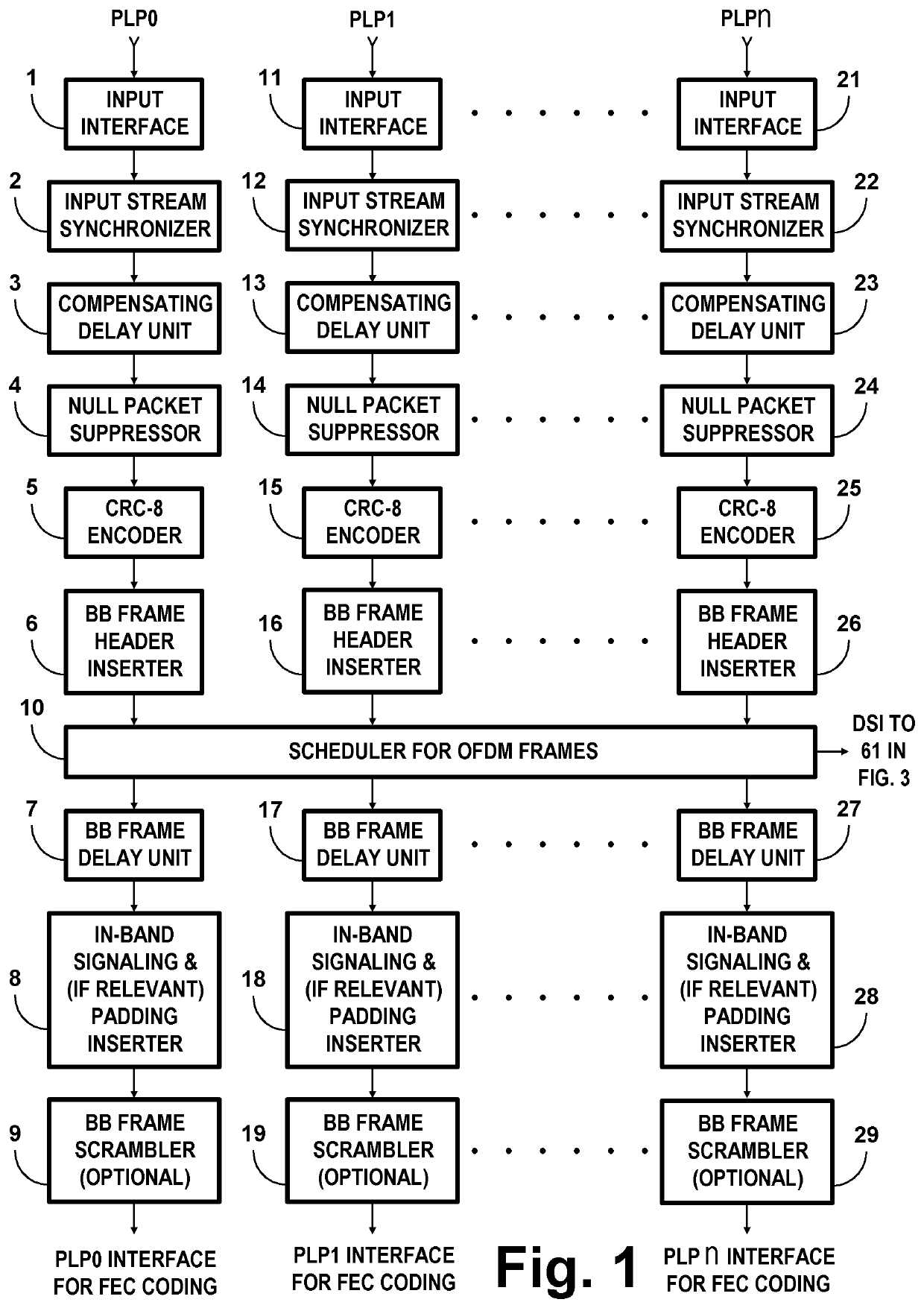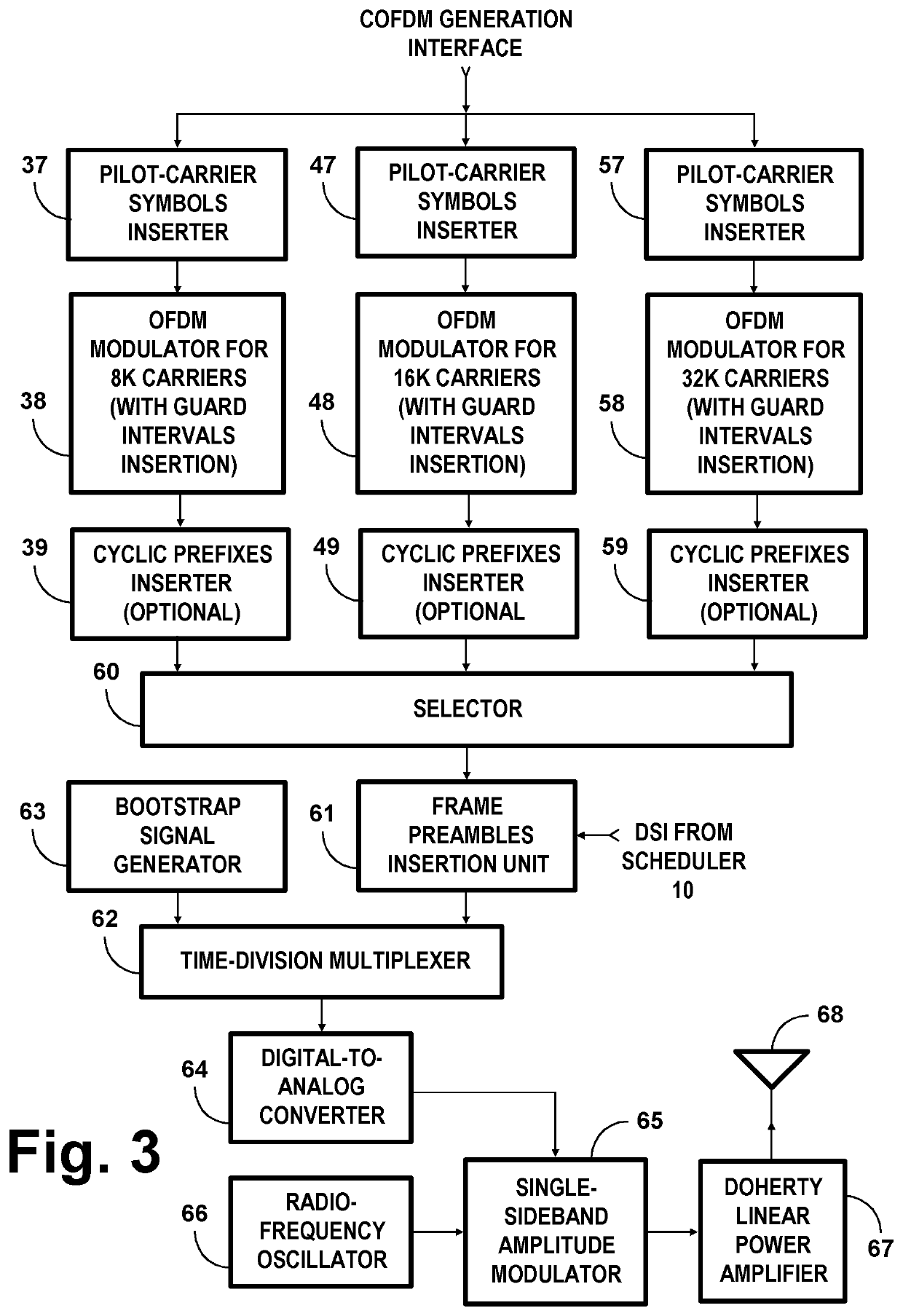COFDM DCM signaling that employs labeling diversity to minimize PAPR
a labeling diversity and cofdm technology, applied in multi-frequency code systems, phase-modulated carrier systems, transmission path sub-channel allocation, etc., can solve the problems of costing expensive power bills, problems in receiver apparatuses, and there is no “road map” to guide skilled system designers, etc., to reduce the bit-error ratio (ber), reduce the range of cofdm signal reception, and minimize the peak-to-average-power ratio (papr).
- Summary
- Abstract
- Description
- Claims
- Application Information
AI Technical Summary
Benefits of technology
Problems solved by technology
Method used
Image
Examples
Embodiment Construction
[0089]FIGS. 1, 2 and 3 depict a DTV transmitter apparatus generating COFDM signals designed for reception by DTV receivers. FIG. 1 depicts apparatus for generating baseband frames (BBFRAMES) at physical-layer-pipe (PLP) interfaces. FIG. 2 depicts apparatus for generating bit-wise forward-error-correction (FEC) coding and subsequent COFDM symbol blocks responsive to the BBFRAMEs supplied at the PLP interfaces. FIG. 3 depicts apparatus for generating and transmitting radio-frequency COFDM signals. Much of the DTV transmitter apparatus depicted in FIGS. 1, 2 and 3 is similar to that specified in European Telecommunications Standards Institute (ETSI) standard EN 302 755 V1.3.1 published in April 2012, titled “Digital Video Broadcasting (DVB); Frame structure channel coding and modulation for a second-generation digital terrestrial television broadcasting system (DVB-T2)”, and incorporated herein by reference.
[0090]A scheduler 10 for interleaving time-slices of services to be broadcast t...
PUM
 Login to View More
Login to View More Abstract
Description
Claims
Application Information
 Login to View More
Login to View More - R&D
- Intellectual Property
- Life Sciences
- Materials
- Tech Scout
- Unparalleled Data Quality
- Higher Quality Content
- 60% Fewer Hallucinations
Browse by: Latest US Patents, China's latest patents, Technical Efficacy Thesaurus, Application Domain, Technology Topic, Popular Technical Reports.
© 2025 PatSnap. All rights reserved.Legal|Privacy policy|Modern Slavery Act Transparency Statement|Sitemap|About US| Contact US: help@patsnap.com



